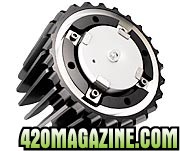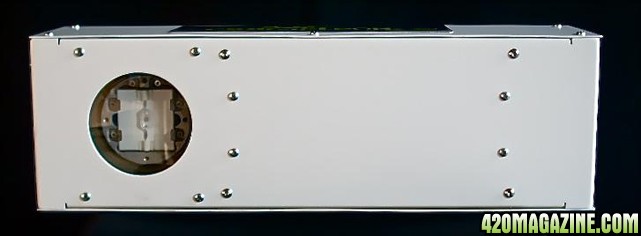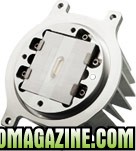CanaHealer
New Member
Hey all,
I am beggining a project that is a bit different and I thought I would through it out there to see if other members have any experiance, input or thoughts on the matter.
I am going to build a light based around one of these.

They create a very full spectrum, but lack on the red end somewhat for an ideal flowering spectrum. I plan to aquire some all red led to supplament and see what happens. Any input would be greatly appriciated, especially on the amount of red supplamentation to bring this light up to an ideal curve.
I think this gadget is pretty darn cool and look forward to getting to play around with some new technology. I have no plans for any side by side against any other type of lighting or anything of that nature. I just feel like I need a project (dont know if you ever get that feelin')
Anyways, I will post some pics up when the unit comes in. I think it wont be for a few weeks. My supplier is still checking avaliablility for the specific model I want.
Well let me know what you folks think.
Thanks,
CanaHealer
For those unfamiliar with it, The light, is in the most simple terms, basically a MH with no fillament. Instead of with a filament, the gases are instead excited with RF (specifically microwave).
Here are a couple of grow vids I found using the light I am purchasing.
YouTube - Plasma light grow with Cannabis
Lastly, For those of you who are going to say that this light isnt better than traditional HID, Thank You I get it. I am not doing this project to build a better light than yours. I want to play with something different and I cannot afford any of the good LED panels out there right now. I like projects, stuff that is just different, and well... driving myself crazy. So haters, please, just let me enjoy myself.
I am beggining a project that is a bit different and I thought I would through it out there to see if other members have any experiance, input or thoughts on the matter.
I am going to build a light based around one of these.

They create a very full spectrum, but lack on the red end somewhat for an ideal flowering spectrum. I plan to aquire some all red led to supplament and see what happens. Any input would be greatly appriciated, especially on the amount of red supplamentation to bring this light up to an ideal curve.
I think this gadget is pretty darn cool and look forward to getting to play around with some new technology. I have no plans for any side by side against any other type of lighting or anything of that nature. I just feel like I need a project (dont know if you ever get that feelin')
Anyways, I will post some pics up when the unit comes in. I think it wont be for a few weeks. My supplier is still checking avaliablility for the specific model I want.
Well let me know what you folks think.
Thanks,
CanaHealer
For those unfamiliar with it, The light, is in the most simple terms, basically a MH with no fillament. Instead of with a filament, the gases are instead excited with RF (specifically microwave).
Here are a couple of grow vids I found using the light I am purchasing.
Lastly, For those of you who are going to say that this light isnt better than traditional HID, Thank You I get it. I am not doing this project to build a better light than yours. I want to play with something different and I cannot afford any of the good LED panels out there right now. I like projects, stuff that is just different, and well... driving myself crazy. So haters, please, just let me enjoy myself.



 Thanks envirotech.
Thanks envirotech.
 cuz I am confused on this one. lol
cuz I am confused on this one. lol


